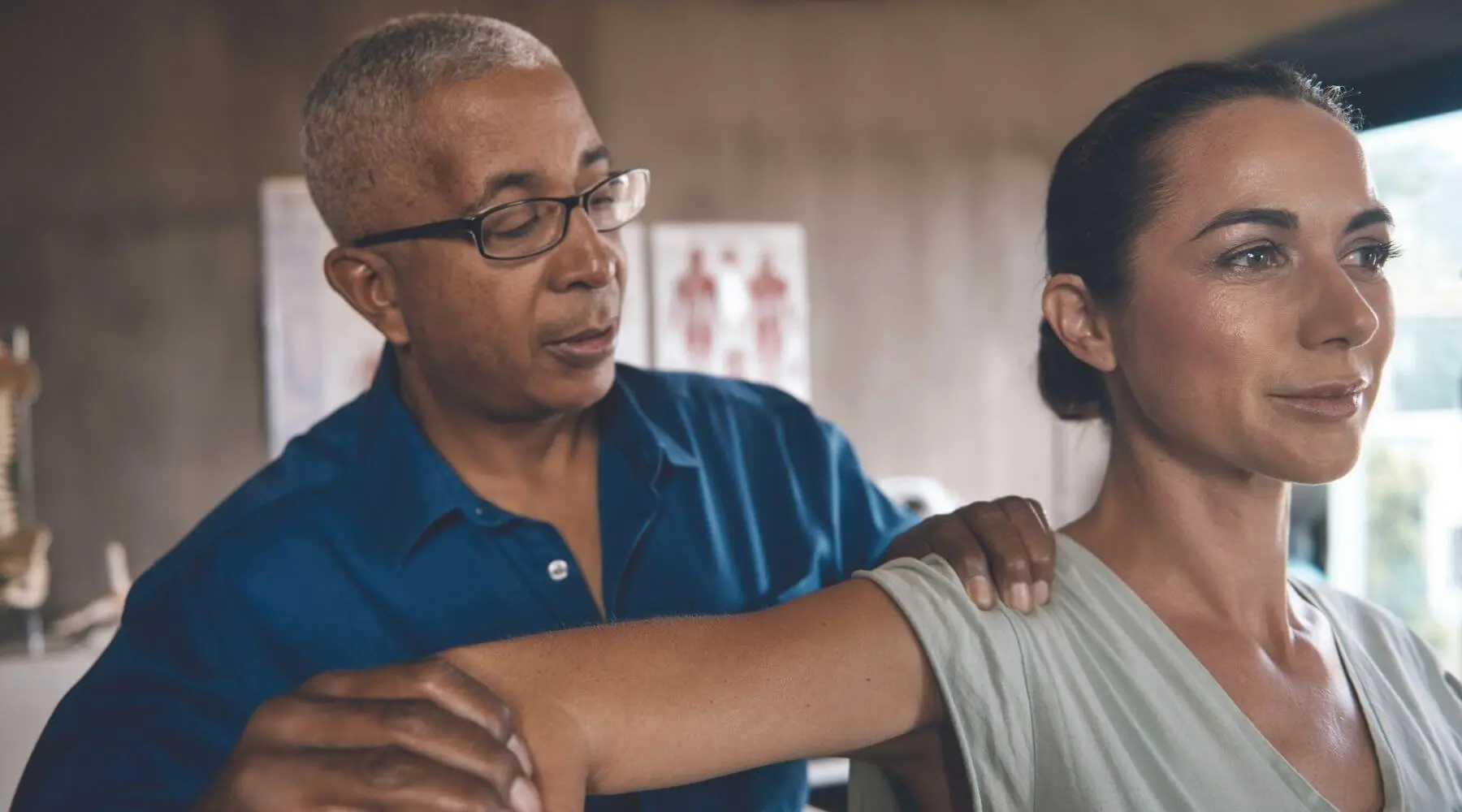Shoulder Physical Therapyin Connecticut, Maryland, Massachusetts, & New York
Shoulder pain is a common issue that can result from injuries, overuse, or conditions affecting the muscles, tendons, or joints. At MOTION, our physical and occupational therapists focus on treating a wide range of shoulder conditions to restore mobility, reduce pain, and prevent future injuries.
Shoulder Conditions We Treat
Arthritis-Related Shoulder Pain
Arthritis in the shoulder is caused by the degeneration of cartilage within the joint, leading to pain, stiffness, and limited range of motion. Over time, this wear and tear can make daily activities challenging.
Bursitis
Bursitis is the inflammation of the bursae—small, fluid-filled sacs that cushion the bones, tendons, and muscles around your shoulder joint. When the bursae become irritated due to overuse or injury, they can cause significant pain, particularly when moving the shoulder.
Frozen Shoulder (Adhesive Capsulitis)
Frozen shoulder causes pain and stiffness in the joint, severely limiting shoulder mobility. It often develops after periods of shoulder immobilization or non-movement, such as after surgery or injury. Frozen shoulder can also be caused by certain conditions, such as diabetes mellitus.
Rotator Cuff Injuries
Rotator cuff injuries are among the most common causes of shoulder pain. These injuries occur when the muscles and tendons that stabilize the shoulder joint become irritated or damaged due to activities like lifting, falling, or repetitive overhead movements.
Shoulder Impingement
Shoulder impingement occurs when the tendons or bursa in your shoulder become compressed or pinched during movement, leading to pain and limited mobility. This is often caused by repetitive overhead activities or poor shoulder mechanics, resulting in inflammation and discomfort.
Tendonitis
Tendonitis refers to inflammation of the tendons that connect muscle to bone, often due to overuse or repetitive motion. In the shoulder, this condition can cause pain and tenderness, especially during activities like lifting or reaching.
At MOTION, we offer a comprehensive range of evidence-based therapy for shoulder pain:
- Manual Therapy and Stretching to restore joint range of motion and improve shoulder mobility.
- Targeted Strength Training to enhance shoulder strength, improve posture, and prevent future injuries.
- Therapeutic Modalities such as ultrasound and electrical muscle stimulation for pain relief and inflammation reduction.
- Personalized Therapy Programs incorporating flexibility and mobility exercises to ensure long-term recovery and optimal function.
Our team is dedicated to delivering expert care for all shoulder injuries. We proudly serve patients in New York, Maryland, Massachusetts, and Connecticut, helping you return to your daily activities, sports, and work. Contact us today to schedule an appointment at one of our locations.

